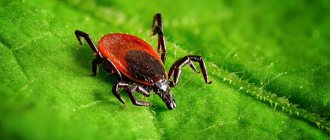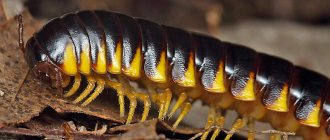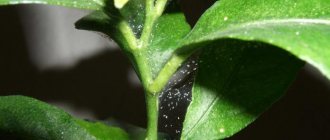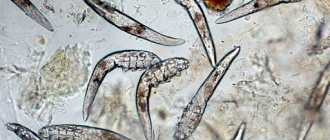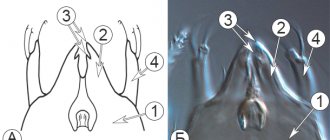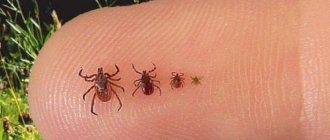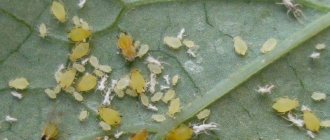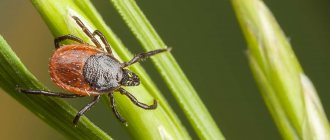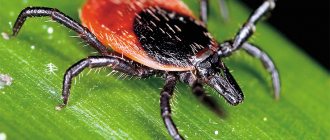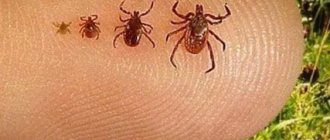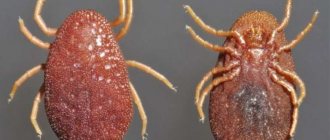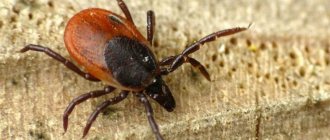Argasid mites belong to the subfamily of iscoid mites and are divided into two types: ornithodorines and argasines. Their popular name sounds like soft or lying in wait ticks. They earned such nicknames due to their body structure and their tendency to settle in secluded places, such as burrows, crevices and cracks, as well as nests and grottoes. Representatives of some species can live in various outbuildings; there are also those that are found in the cracks of rooms whose walls are made of clay.
Appearance, varieties and features
Argasid mites are the largest representatives of the family. Their length reaches 3 cm. They have a flat oval body with folds and without a shell, soft in appearance. Because of this, they are also called soft ticks. The mouthparts with sharp jaws and proboscis are located below. The tick has 4 pairs of limbs, on which it moves rather slowly.
Females are noticeably larger than males. The color of an individual depends on whether it has drunk blood or not. When hungry, argasid mites are gray in color with a noticeable border around the circumference. When the tick has drunk blood, it swells and becomes purple-purple in color. An adult can absorb 12 times more blood than its own weight.
In its development, a tick goes through the following stages:
- egg;
- larva;
- nymph of the first, second, third age;
- imago - an adult individual.
The female lays about a hundred eggs. Under unfavorable conditions, there may be more nymph stages. Typically, the process of turning an egg into an adult takes about a year, in poor conditions - up to two years. Argasid mites are parasitic starting from the larval stage.
Peculiarities
Argasid mites live up to 20 years, and can live for a very long time without food. Thus, an adult can survive without food for up to 14 years, and a larva can live in this state for up to 2 years.
Kinds
Argasid ticks are divided according to the blood of which animals and birds they prefer to feed on. For example, there are ticks that feed on blood:
- large and small cattle (Alveonasus lahorensis and Alectorobius Тholozani);
- chickens (A. Persicue);
- dogs and goats (Alect. Asperus);
- pigeons (Alect. Coniceps).
There are species that feed on the blood of various animals, including small rodents.
12 species of argasid mites (Argas and Ornithodoros) can attack humans.
Village ticks are considered the most dangerous. They can parasitize any vertebrate animals and humans.
Lifestyle
Unlike ixodids, the life cycle of the argas fauna is longer. Under favorable conditions, the lifespan of females is 11 years. There are known cases of longevity among Argasids - 23 years. This is facilitated by the peculiarities of nutrition, reproduction, as well as the ability to enter diapause - starve for a long period while waiting for the owner.
At all stages of development, with the exception of the egg, individuals feed on blood. The suction process is painless for the victim and can last from a few minutes to 2 hours. But on average, feeding lasts 15 minutes.
On a note! The main difference between an Argasidae female and an Ixodidae, which lays offspring at a time, is the ability to lay eggs repeatedly after each feeding.
The full development cycle includes:
- egg;
- larva;
- nymphal phase;
- imago.
Mating of adults can occur both before and after replenishment of nutritional reserves. Like ixodids, hungry females rarely lay eggs. But after saturation, they lay eggs in small batches of 50–200 pieces in secluded places, again look for a source of food and give birth to new offspring. The number of gonotrophic cycles usually does not exceed 6.
Under favorable conditions, larvae emerge from the spherical eggs after a few days. They are very active. The differences between larvae and adults are a rounder body, long limbs and small size. They quickly find the victim, receive a portion of blood and fall into the forest floor, sand for molting.
After molting, the larvae enter the nymphal stage, there are three in total, but in some species the number of nymphal molts reaches 7. A characteristic feature of argasid ticks is that the number of nymphal stages is not consistent even within the same species and depends on conditions, availability of food and gender. At this stage, individuals develop leathery folds characteristic of argasid mites.
Interesting! Nymphs have a unique feature. Immediately after feeding, the coxal glands produce a secretion that eliminates excess moisture in the blood plasma. This factor contributes to the fact that individuals need less biomaterial to satiate, and their digestive system spends fewer resources for digestion.
On average, the development cycle from egg to adult is 2 years.
Harm from the argas mite to humans
Argas mites attack livestock and poultry, causing their death. They also carry dangerous diseases.
A tick bite hurts. The bite site turns red and itches. Allergic reactions occur because when a tick bites, it injects saliva that has a toxic effect. A papule filled with bloody fluid forms at the site of the bite.
A person can become infected after a tick bite with the following diseases:
- borreliosis;
- relapsing fever;
- hemorrhagic fever.
These diseases are the most common, but argas ticks can also carry other infections. If you find a tick or bite, you should consult a doctor as soon as possible and begin treatment.
Argasid mites attack people in the absence of other food, so there are not many cases of disease infection from this type of mite in humans. They pose a much greater danger to animals.
Maliciousness
In relation to animals
If the colony is large in number, argas mites are very dangerous. Having attacked an animal, they damage its skin, reduce productivity, and after some time the feeder becomes noticeably depleted. In addition, when bitten, the parasite's saliva mixes with the blood, which subsequently leads to the development of acute diseases, sometimes to paralysis. Moreover, if treatment is not started in time, infected animals die a month later.
On a note! In the southern regions of Russia, the peak of livestock mortality from argasid tick attacks occurs in December and January. At this time, nymphs are especially active, spreading the disease in record time - it takes no more than two weeks to infect the entire herd with parasites!
You can recognize an infected animal by its behavior. When attacked by argas ticks, they begin to behave excitedly, show anxiety, itch and constantly look around in the hope of noticing the source of discomfort. After some time, such animals will experience slight tremors in the body, stability will be impaired, and soon they will completely lose the ability to stand on their feet and lie down. With a stable body temperature and normal appetite, there is a disturbance in the pulse, breathing becomes difficult and shallow. If you pay attention to the eyes, you will notice a significant dilation of the pupils, and foam will separate from the mouth along with saliva. The mucous membranes acquire a pale tint, sometimes blue.
Important! This disease is very dangerous and death occurs within five days after the first symptoms appear!
In relation to a person
If the argas mite does not find its natural host, it attacks a person. The greatest activity of the parasites in this case will occur at night, but sometimes they bite during the day.
The bite of an argas tick is quite painful, and the body can react to it with an allergic reaction. First, a dark red spot appears on the affected area, then a swelling with liquid bloody contents appears on it. In this case, the bite site is very itchy, and the area around it is covered with a rash. This reaction is caused by the fact that the saliva of this parasite is very toxic.
Argas tick bites can cause the development of the following diseases:
- Caucasian tick - carries endemic relapsing fever.
- Poselkovy - spreads spirochetes, which, in turn, are the causative agents of borelliosis and tick-borne relapsing fever. Moreover, these pathogens can enter the human body both directly after a bite and when tick waste products come into contact with the surface of the skin.
- Representatives of some species are capable of transmitting invasive diseases and various infections. In this case, the pathogens enter the body within a minute after the skin is punctured.
Important! The most dangerous diseases transmitted by argasid ticks are relapsing fever and hemorrhagic fever. And in order to prevent sad consequences, you must consult a doctor immediately after a bite!
Danger to animals
The danger to livestock and poultry from tick bites is much higher. Tick attacks can be widespread and cause entire epidemics. Animals develop fever and even paralysis.
Symptoms of infection in pets:
- excitation;
- constant itching;
- slight trembling throughout the body;
- increased heart rate;
- dilated pupils;
- increased salivation and foaming at the mouth.
If no treatment measures are taken, the animal dies within 2 to 4 weeks.
Most often ticks attack in winter. At this time, the mite larvae emerging from the eggs become active and begin the feeding process.
What are the types?
The tick Ornithodorus coriaceu lives in Mexico. Peasants are no less afraid of these ticks than they are of poisonous snakes. The bite of this insect causes severe pain. The most studied and frequently encountered types of insidious insects are listed in the table.
Read on topic:
Appearance of gamasid mites and the fight against them
14.11.2020
Signs of knemidocoptosis and ways to eliminate the disease
14.11.2020
Selection of the best tablets and anti-tick products for dogs in 2020, as well as drops, shampoos, sprays, collars
06.10.2020
Purpose of Reftamide and methods of its use
20.06.2019
| Tick name | Habitat area | Whose parasite | Why is it dangerous? |
| Caucasian tick Ornithodoros verrucosus and Alectorobius asperus | distributed in Transcaucasia, southern Ukraine. | prefers goat and dog blood. In the absence of these, it attaches itself to a person. | a carrier of Borellium, a bacteria that causes relapsing fever. When an insect bites, borellium enters the bloodstream. |
| Persian tick (Argas persicus) from the genus of shield mites. In the east it is called male | Wide habitat, covering the southern regions of the European part of Russia, southern Ukraine, the Volga region, the Caucasus, Crimea, southern western Siberia, Kazakhstan and Central Asia. | lives next to humans. The tick approaches people at night during sleep, pierces the skin, causing pain, and attaches itself to the bloodstream. | It is known to be a carrier of malignant fever, from which people die quite often in the countries of Egypt and Iran. |
| Village mite (Ornithodoros papillipes) and Alectorobius Tholozani | Distributed in Iran, Afghanistan, India, the Central Asian republics and Kazakhstan. | Tick-borne borelliosis and endemic (tick-borne) typhus are transmitted from sick to healthy people. Borellias enter the human body through the proboscis, which the insect uses to pierce the skin, and as a result of toxic insect excretion products entering the body. | |
| Shell mite (Argas reflexus) | lives in the countries of Europe and Asia Minor. It is found in Africa and North America, | It is considered a parasite of pigeons; it rarely attaches itself to other birds. It can also attach itself to a person if it is very hungry. | In humans, it causes severe allergic reactions, including anaphylactic shock. Experts suspect that this tick carries fever. |
| Kosharny, or Alveonasus lahorensis | It lives in the southern regions, in Central Asia in rural areas, in sheds. | Parasitizes sheep and camels. It feeds on the blood of cattle (both small and large), horses, camels, donkeys and dogs. Hungry ticks attack humans. | Distributor of a number of diseases in animals and humans |
The cat tick has an elongated body shape, pointed towards the front, 8-10 mm long. The insect lays eggs, from which larvae form after 2-3 weeks. Animals are attacked in the fall. The cat tick provokes the following diseases:
- infectious blood diseases in sheep - anaplasmosis and theileriosis;
- camel trypanosomiasis;
- Brucellosis in most domestic animals, which is transmitted to humans.
- equine encephalomyelitis,
- rickettsioses are human diseases that have several different forms, which are divided into two groups: typhus and fevers;
- damage to the lymph nodes - tularemia in humans.
One of the varieties is the Koshar tick.
The larvae, having attached themselves to the body of the sheep, feed intensively, molt, turn into a nymph, continuing to remain on the animal. The nymph feeds, molts three times, and falls to the ground. The larva turns into a nymph within 1-1.5 months. The nymph will develop into an adult in a few more months. The insect develops up to 1.5 years.
In the absence of food, ticks can starve for 7-10 years.
Fighting methods
Argasid mites are also called ticks in waiting. They hide in secluded places - various crevices, small cracks, holes, where they wait for their prey. To protect animals and birds from pests, it is necessary to promptly treat the premises where they are kept. Moreover, all surfaces must be carefully treated, including cracks and crevices in the floor, walls, and ceiling. For treatment, it is necessary to use products with insectoacaricidal and disinfectant effects based on benzophosphate, chlorophos, and aerol. Before treatment, animals are removed from the room; after treatment, the room must be ventilated. The livestock is treated with acaricidal agents approved for use on animals. If there are already pests on the body, then they must be removed.
Birds and their habitats are treated with dust. It is necessary to treat the poultry house, perches, and surrounding area. It is imperative to eliminate potential tick habitats - cover all cracks and cracks.
To treat livestock, poultry and premises for keeping them, you can use cypermethrin-based anti-ectoparasites, for example, Ectomethrin from MediLis. They can also be used on dogs.
Gamas mites in the house
They enter a person's home on the fur of pets, through ventilation holes, and open windows. Often the reason for the appearance of ticks in an apartment is the pest control of basements and attics.
To get rid of gamas ticks, it is not necessary to call sanitary services. You can do this yourself at home. Treatment of residential premises is carried out using insectoacaricidal agents: Tsifoks, Fufanon, Tetrix, Get. Bedding is washed at high temperatures. Blankets and pillows can be treated with a steam generator.
If the housing closely borders the habitat of rodents: basements, attics, the first stage is decontamination, and the second is deratization.
Prevention
If the farm is located in a potentially dangerous area where argasid mites are found, periodic preventive treatment of the surrounding area and premises is required. It is believed that pests move into shelters with the onset of cold weather. It is at this time that inspection of such places will be effective.
Prevention is as follows:
- cleaning the area from debris in which ticks may be hiding;
- control of rodents that can be carriers of ticks and their larvae;
- sealing cracks in buildings and structures, treating them with acaricides;
- spraying bushes and trees located next to animal and poultry premises with hexachlorane;
- a careful inspection of the territory, buildings and animals to detect ticks - they are large enough, they can be seen without special devices.
All processing must be carried out in protective clothing and in compliance with safety precautions. After treatment, thorough ventilation of the premises is necessary.
To protect yourself from tick attacks, a person needs to use repellents, for example, MediLis-Comfort.
Soil mites
Among mites there are a huge number of species of soil mites. They are of great importance for soil formation and the normal functioning of the soil as a nutrient medium for plants. Among soil mites, there are mainly species that feed on decaying organic matter, but there are a large number of predatory mites. You don’t need to be immediately scared when you see a tick crawling on the soil. This is most likely a relatively large predatory mite that also feeds on pests of indoor plants. And in any case, there is no such substrate in which there would be no mites. You need to understand that mites are everywhere, but not all mites harm your flowers, but only a few, and such pests live mainly on plants, not on the soil.
| Soil predatory mite | Soil predatory mite |
Soil mites - discussion on our flower forum.
Chemicals for tick control:
Agravertin, ECInsectoacaricide of biological origin with enteric contact action (Avertin N 2 g/l, analogue of Akarin, EC.).
Akarin, ECInsectoacaricide of biological origin with enteric contact action (Avertin N 2 g/l, analogue of Agravertin, EC.).
Actellik, EC Non-systemic organophosphorus insectoacaricide with intestinal contact action (pirimiphos-methyl (organophosphorus group) 500 g/l.). Not recommended for residential use due to high toxicity! Spraying plants: 2 ml per 1 liter of water. Solution consumption up to 2 liters per 10 sq.m.
Aktofit, ECInsectoacaricide of biological origin with enteric contact action (Aversectin S - 0.2%),
Apollo, KSContact acaricide, ovicidal prolonged action (clofentesine 500 g/l).,
Borneo, KSAcaricide of hormonal action, destroys eggs and larvae of plant mites, sterilizes adults (Etoxazole, 110 ml/l).
Vertimek, KENNonsystemic insectoacaricide of biological origin, enteric contact action (abamectin, 18 g/l). Spraying plants with a solution: 5 ml per 10 liters of water. After spraying, put a transparent plastic bag on the plant; the bag can be removed after a day.
Envidor, a contact action KSAcaricide, destroys eggs, larvae, as well as females of herbivorous mites (spirodiclofen 240 g/l.).
Kleschevit, KEInsectoacaricide of biological origin with enteric contact action (Avertina-N 2 g/l.).
Marshall, CE Systemic insecticide of contact-intestinal action of the class, has acaricidal and nematicidal properties. (carbosulfan, 250 g/l). Not recommended for use due to high toxicity!
Nissoran, SPAcaricide, which has an effect on eggs, larvae and nymphs of many types of ticks (hexythiazox, 100 g/kg).
Nurell-D, KEInsecticide with a wide spectrum of contact-intestinal, fumigative, local-systemic and repellent action (500 g/l chlorpyrifos and 50 g/l cypermitrin). Also acts on mites resistant to organophosphorus compounds.
Oberon, KSContact insectoacaricide to combat herbivorous mites and whiteflies (Spiromesifen 240 g/l.).
Omite 30, SPAcaricide of contact action (propargit 300 g/kg). Destroys active stages of tick development (larva, nymph, adult).
Omite 57, KEAcaricide of contact action (propargit 570 g/kg). Destroys active stages of tick development (larva, nymph, adult).
Sunmite, SPAcaricide of contact action (pyridaben 200 g/kg), characterized by high activity in controlling pests at all stages of their development
Fitoverm, KEInsectoacaricide of biological origin with enteric contact action for the protection of flower crops in open and protected ground (aversectin C 2 g/l.).
Floromite, KSAcaricide of contact-intestinal action against herbivorous ticks (Bifenazate 240 g/l.).
Flumite, contact action KSAcaricide (flufenzine 200 g/l.).
Materials used in the article:
G.E. Kisilev. Floriculture. Second edition supplemented. M.: State. Publishing House of Agricultural Literature, 1952. — 992 pages
https://152.98.200.7/ento/mite/brevip.html
https://www.viarural.com.ar/viarural.com.ar/agricultura/aa-insectos/brevipalpus-obovatus-02.htm
https://www.bio-bee.com/site/pests.asp?pa_id=158&page_id=278
Gamazovye
The chicken mite is very small, its body is less than a millimeter long, but its saliva is extremely toxic. After being saturated with blood, the female lays about 20 eggs in secluded depressions or crevices. Three days later, offspring appear, which need a host - a bird - for nutrition and further development. The chicken mite feeds only at night and goes into hiding during the day. Thus, its development, under favorable conditions, does not exceed a week.
In many ways, the life cycle depends on individual conditions and habitat. The growth in the number of argas mite individuals is facilitated by the required amount of food and high humidity levels.
It is in these conditions that a comfortable environment for the reproduction of insects is created. If they are inaccessible to the agras mite, the individual will increase, but the reproduction rate will decrease.
Nymphs can have from two to seven developmental stages. If the insect develops in suitable conditions, the life cycle occurs over several months. But if the tick cannot find the ideal environment for development, it can only survive for a few years.
Egg laying and molting occur naturally after detachment from the host. Many species of argasids lay eggs several times, and hunting occurs before each laying. After about a month, larvae emerge from the eggs, and within 30 days they can independently attack animals.
Ticks in the house or “cat stories”
Even if the cat has never left the apartment, it can be attacked by an Ixodid tick brought in from the street or attached to your dog. Comb Murka's fur with a fine-toothed comb and blow on it. If you find a fast-moving tick, remove it, burn it or dip it in alcohol. A tick that is sucking blood on the thighs, behind the ears, in the groin, on the stomach of your cat will look like a pea or a dark or pink bead. A tick bite in cats can cause the same piroplasmosis with typical signs or infectious anemia, as well as theileriosis. Worsening of the general condition, loss of appetite, inactivity, yellowing of the sclera, possible change in the color of urine, and cough should alert you.
It is necessary to remove the tick so that the head does not remain under the skin.
What is your dog “complaining” about?
The most common disease that occurs in dogs due to a tick bite is piroplasmosis (babesiosis). The destructive virus penetrates through the blood of an animal, so the severity of the disease or even the life of the animal depends on the speed of detection of the arthropod
During the mandatory examination of the dog’s body after a walk, special attention is paid to the ears, belly, withers, and paws. The detected bloodsucker is immediately removed
With late therapy, the administered medications can no longer help. It is especially difficult for a person to look at a suffering animal: it cannot talk about its illness.
Therefore, you need to immediately contact a veterinarian if you notice the following symptoms in your Bobik:
- poor appetite or the dog refuses to eat food at all;
- a sharp increase in temperature (41-42°C), alternating with a decrease after a couple of days to 36°C°;
- intermittent difficulty breathing;
- lack of coordination when moving;
- weakness, lethargy;
- paralysis of the hind legs;
- disruption of the functioning of internal organs, as evidenced by the color of urine (dark brown or brown) and constipation, followed by diarrhea.
- severe anemia manifests itself in pallor of the mucous membranes.
The disease develops acutely, but then can go into a chronic stage, in which progressive anemia is added to the existing symptoms. This condition lasts for one and a half months. The dog comes out of it with difficulty.
Short-haired, young (under 2 years old) and old (over 8 years old) animals are most at risk of infection. This group also includes small dogs (poodle, Yorkshire terrier, etc.).
Literature
- Balashov Yu. S.
Blood-sucking ticks (Ixodoidea) are carriers of human and animal diseases. - L.: Nauka, 1967. - 320 p. - Filippova N. A.
Argas mites (Argasidae) // Fauna of the USSR: Arachnids. - M., 1966. - T. 4. Issue. 3. - 255 p. - Tarasov V.V.
Ecology of blood-sucking insects and ticks. - M.: Moscow State University Publishing House, 1988. - 264 p. — 1400 copies.
In foreign languages
- Hoogstraal, H. (1985). Argasid and nuttalliellid ticks as parasites and vectors. Advances in Parasitology, 24, 135–238.
- Keirans, J. E. (1992). Systematics of the Ixodida (Argasidae, Ixodidae, Nuttalliellidae): an overview and some problems. In: Fivaz, B., Petney, T., Horak, I. (Eds.) Tick vector biology. Medical and veterinary aspects. Springer-Verlag, pp. 1-21.
